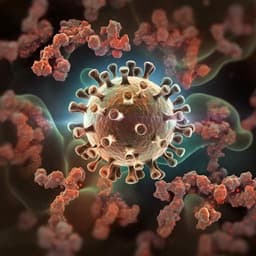
Medicine and Health
A Self-Assembling Mosaic Nanoparticle Vaccine for Broad Coronavirus Immunity
P. Bjorkman
This groundbreaking study by Pamela Bjorkman explores a novel mosaic nanoparticle vaccine, 6RBD-np, designed to deliver six receptor-binding domains from coronaviruses. The research showcases its ability to induce high antibody responses and complete protection against SARS-CoV-2 variants, paving the way for a potential broad-spectrum coronavirus vaccine.
Playback language: English
Related Publications
Explore these studies to deepen your understanding of the subject.







